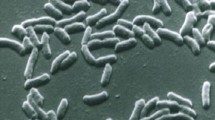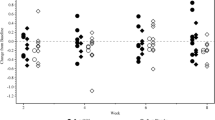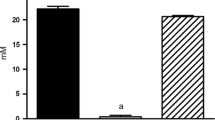Abstract
Current treatment options in patients with primary and secondary hyperoxaluria are limited and do not always lead to sufficient reduction in urinary oxalate excretion. Intestinal oxalate degrading bacteria are capable of degrading oxalate to CO2 and formate, the latter being further metabolized and excreted via the feces. It is speculated, that both endogenously produced, as well as dietary oxalate can be significantly removed via the intestinal tract. Oxalobacter formigenes, an obligate anaerobic microbe normally found in the intestinal tract has one oxalate degrading enzyme, oxalyl-CoA decarboxylase, which is also found in Bifidobacterium lactis. Other bacteria with possible oxalate degrading potency are lactic acid bacteria, as well as Enterococcus faecalis and Eubacterium lentum. However, specific therapeutic studies on humans are scarce and, except for Oxalobacter, data are not congruent. We found the oral application of Oxalobacter successful in patients with primary hyperoxaluria. However, long-term post-treatment follow-up of 1–2 years showed that constant intestinal colonization is not achieved in most patients. In one patient with constant colonization, urinary oxalate excretion normalized over time. Short-term studies with other bacteria such as lactic acid bacteria did not show a specific reduction in urinary oxalate excretion. O. formigenes might be a promising new therapeutic tool in patients with primary and secondary hyperoxaluria.
Similar content being viewed by others
References
Leumann E, Hoppe B (2001) The primary hyperoxalurias. J Am Soc Nephrol 12: 1986
Hoppe B, Langman C (2003) A United States survey on diagnosis, treatment and outcome of patients with primary hyperoxaluria. Pediatr Nephrol 18: 986
Hoppe B, Leumann E, Von Unruh G, Laube N, Hesse A (2003) Diagnostic and therapeutic approaches in patients with secondary hyperoxaluria. Front Biosci 8: e437
Kumar R, Mukherjee M, Bhandari M, Kumar A, Sidhu H, Mittal RD (2002) Role of Oxalobacter formigenes in calcium oxalate stone disease: a study from North India. Eur Urol 41: 318
Sidhu H, Hoppe B, Hesse A, Tenbrock K, Brömme S, Rietschel E, Peck AB (1998) Antibiotic induced loss of the gut associated bacterium Oxalobacter formigenes: a risk factor for hyperoxaluria in cystic fibrosis patients. Lancet 352: 1026
Williams HE, Wandzilak TR (1989) Oxalate synthesis, transport and the hyperoxaluric syndromes. J Urol 141: 742
Siener R, Hesse A (2002) The effect of different diets on urine composition and the risk of calcium oxalate crystallization in healthy subjects. Eur Urol 42: 289
Von Unruh GE, Voss S, Sauerbruch T, Hesse A (2003) Reference range for gastrointestinal oxalate absorption measured with a standardized [13C2]oxalate absorption test. J Urol 169: 687
Holmes RP, Goodman HO, Assimos DG (2001) Contribution of dietary oxalate to urinary oxalate excretion. Kidney Int 59: 270
Sidhu H, Holmes RP, Allison MJ, Peck AB (1999) Direct quantification of the enteric bacterium Oxalobacter formigenes in human fecal samples by quantitative competitive-template PCR. J Clin Microbiol 37: 1503
Sidhu H, Schmidt ME, Cornelius JG, Thamilselvan S, Khan SR, Hesse A, Peck AB (1999) Direct correlation between hyperoxaluria/oxalate stone disease and the absence of the gastrointestinal tract-dwelling bacterium Oxalobacter formigenes: possible prevention by gut recolonization or enzyme replacement therapy. J Am Soc Nephrol 14: S334
Hatch M, Freel RW (2003) Renal and intestinal handling of oxalate following oxalate loading in rats. Am J Nephrol 23: 18
Hoppe B, Hesse A, Brömme Sabine, Rietschel E, Michalk D (1998) Urinary excretion substances in cystic fibrosis: risk of urolithiasis? Pediatr Nephrol 12: 275
Hokama S, Honma Y, Toma C, Ogawa Y (2000) Oxalate degrading Enterococcus faecalis. Microbiol Immunol 44: 235
Campieri C, Compieri M, Bertuzzi V, Swennen E, Matteuzzi D, Stefoni S, Pirovano F, Centi C, Ulisse S, Famularo G, De Simone C (2001) Reduction of oxaluria after an oral course of lactic acid bacteria. Kidney Int 60: 1097
Federici F, Vitali B, Gotti R, Pasca MR, Gobbi S, Peck AB, Brigidi P (2004) Characterization and heterologous expression of the oxalyl CoA decarboxylase gene from Bifidobacterium lactis. Appl Env Microbiol 70: 5066
Hoppe B, Zimmermann D, Beck B, Von Unruh G, Laube N, Hesse A (2004) Is a reduction of intestinal oxalate absorption and concomitantly urinary oxalate excretion possible under therapy with lactic acid bacteria? Pediatr Nephrol 19: C138, P186
Ito H, Miura N, Masai M, Yamamoto K, Hara T (1996) Reduction of oxalate content of foods by the oxalate degrading bacterium, Eubacterium lentum WYH-1. Int J Urol 3: 31
Sidhu H, Allison MJ, Chow JM, Clark A, Peck AB (2001) Rapid reversal of hyperoxaluria in a rat model after probiotic administration of Oxalobacter formigenes. J Urol 166: 1487
Hoppe B, Hesse A, Von Unruh G, Beck B, Schmidt H, Sidhu H (2003) Treatment with Oxalobacter formigenes: a new therapy in patients with primary hyperoxaluria (PH)? Pediatr Nephrol 18: C15 (O12)
Hoppe B, Gatter N, Beck BB, Von Unruh G, Laube N, Hesse A, Sidhu H (2004) Oral administration of Oxalobacter formigenes capsules is effective in lowering the urinary oxalate excretion in patients with primary hyperoxaluria type I (PH I). J Am Soc Nephro 15: SU-FC056, P55A
Rogowska-Kalisz A, Tkaczyk M, Bilinska W, Nowicki M (2003) The results of conservative treatment of oxalate urolithiasis in children. Pol Merkuriusz Lek 15(85):51–54
Author information
Authors and Affiliations
Corresponding author
Rights and permissions
About this article
Cite this article
Hoppe, B., von Unruh, G., Laube, N. et al. Oxalate degrading bacteria: new treatment option for patients with primary and secondary hyperoxaluria?. Urol Res 33, 372–375 (2005). https://doi.org/10.1007/s00240-005-0497-z
Received:
Accepted:
Published:
Issue Date:
DOI: https://doi.org/10.1007/s00240-005-0497-z




